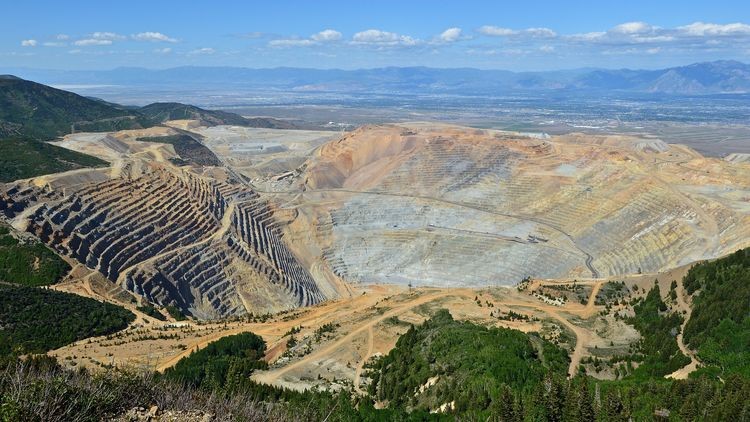Carbonates
Mapping and understanding Carbonates is a particular strength of airborne Full Tensor Gravity Gradiometry at Bell Geospace. In this article, guest blogger Graham Banks explains why carbonates are high priority right now
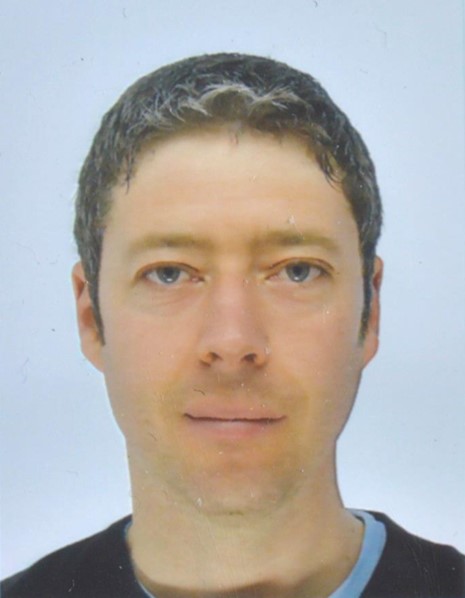
Graham Banks, Route 2 Reserves
Why explore carbonate rocks for critical metals, base metals and petroleum
Introduction
The human population is predicted to increase by 3.5 billion people by 2100 (Roser, 2013). By 2050, two-thirds of people will be urban-dwellers (Ritchie and Moser, 2018). Can you imagine the volume of new night lighting, electronic hardware, wire, galvanised steel, tarmac and engine fuel that society will need? Which rocks are we going to discover the necessary raw materials in?
Carbonate rocks should be at the front of our minds as exploration targets, considering their historic track record of yielding vast amounts of essential materials.
-
First, I’ll review some characteristics of carbonate rocks.
-
Then we’ll see examples of carbonates hosting huge accumulations of critical metals, base metals and the petroleum needed to fuel the green transition.
-
Finally, I’d like to impart the thrill of discovering commodities in carbonate rocks and using 4000-year-old copper mines as exploration analogues. A future blog will review the techniques and tools used to characterise carbonate reservoirs.
Carbonate rocks contain more than 50% carbonate minerals (e.g. calcite and dolomite). They form a range of dense rock types including limestone, dolostone, marble and carbonatite
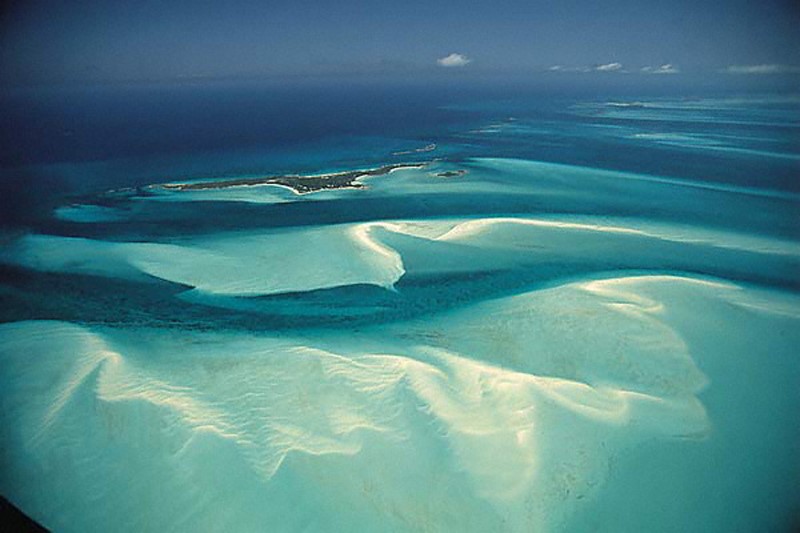
Sedimentary carbonate rocks precipitate from warm oceans (Figure 1) and lakes and on cavern walls, or are made from the shells and bones of aquatic organisms. Some may metamorphose into marble or skarn during deep burial, continental collision or proximity to magmas/hot fluids
Figure 1. The Bahamas Banks carbonate factory. https://www.geol.umd.edu/~jmerck/geol342/lectures/15.html
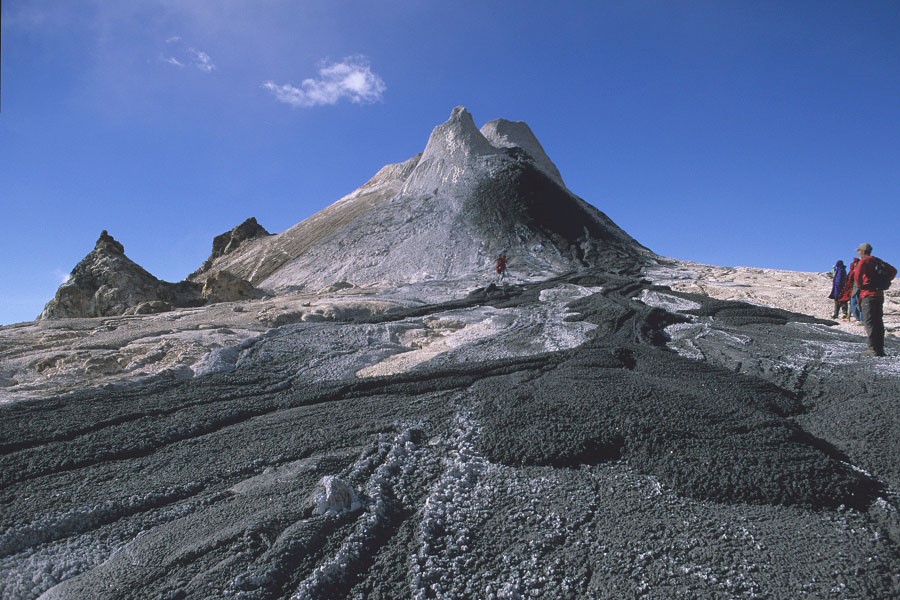
Carbonate magmas solidify to form volcano-related carbonatite rocks (Figure 2) and are of economic interest for critical minerals like rare earth elements (REE) and niobium.
Figure 2. Carbonatite lava erupting from Oldoinyo Lengai Volcano. http://www.photovolcanica.com/VolcanoInfo/Oldoinyo%20Lengai/Lengai2004_2_7.JPG
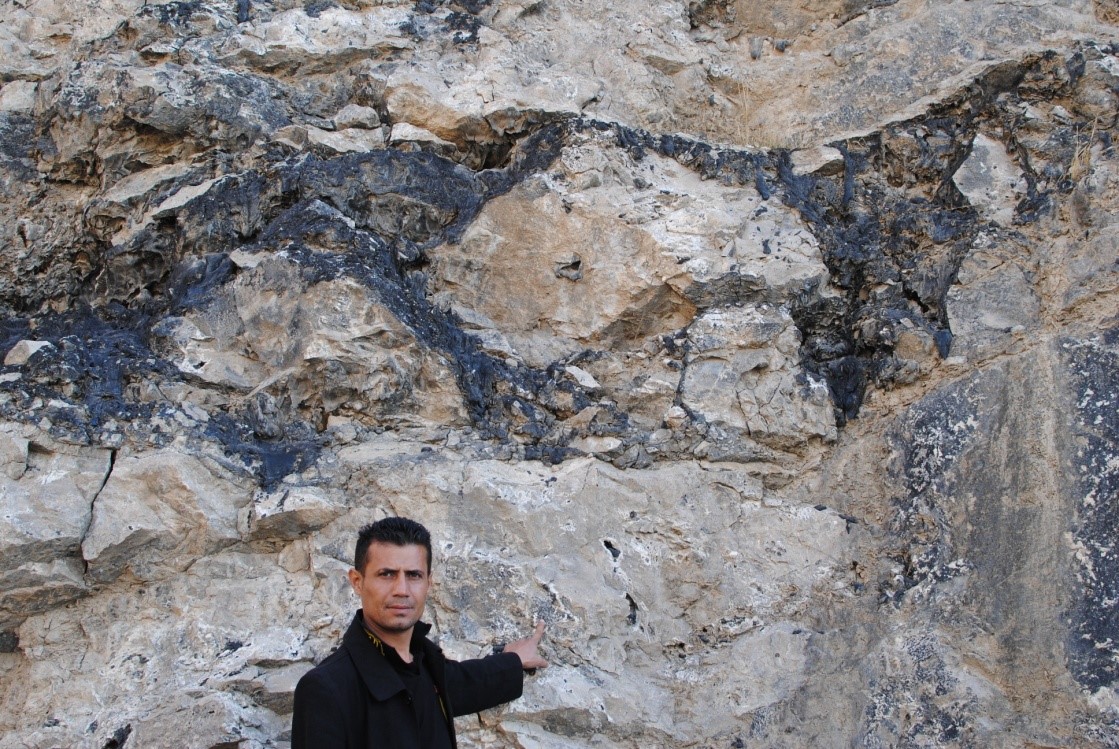
Carbonate rocks can be dissolved by rainfall and groundwater to form fracture voids (Figure 3), karst and cave systems, into which metals and petroleum can be trapped.
Figure 3. Bitumen-filled fault porosity in the carbonate Bekhme Formation, Iraqi Kurdistan. Such porosity and permeability in the subsurface would make a supreme metal or petroleum reservoir. Photo ©2010 Graham Banks.
Carbonates for Critical Metals
Let’s start with critical metals: the building blocks for a cleaner and digitised economy. Tungsten and REE are on the critical minerals/raw materials lists of the US, the EU and Canada (Fortier, et al., 2018; European Commission, 2020; Natural Resources Canada, 2021) due to few global sources and nations’ high dependence on imports. Another metal crucial for electrification, copper, is on Canada’s critical minerals list.
Imagine how society may have evolved during the last 100 years without tungsten filaments for lights bulbs. More than 70% of global tungsten production is from skarn-type ore deposits (Misra, 2000). Skarns are formed by replacement of mainly limestones and dolostones by ore-bearing hydrothermal solutions, at their contact of igneous intrusions. Tungsten skarns occur in most continents but concentrated in the western Cordillera of North America and China (Misra, 2000). Skarns are also sources of copper, iron, molybdenum, gold and zinc (Misra, 2000) e.g., the high-grade copper-gold skarns associated with the Bingham Canyon Mine in Utah (Figure 4).
Figure 4. The North Rim Skarn, below the Bingham Canyon porphyry copper mine, hosts 730,000 tonnes of copper, 1 million ounces of gold and 13 million ounces of silver (Rio Tinto, 2011). Image from https://epod.usra.edu/blog/2014/08/the-richest-hole-on-earth-bingham-canyon-mine.html
The REE are a group of metals required for permanent magnets in electric cars and wind turbines, for mobile phones and LCD screens, for fuel-cracking catalysts, etc. (e.g., Fortier et al., 2018). The REE receive lots of media attention because China provides 60 % of the world’s REE and holds > 30% of global Reserves (USGS, 2021). Plus, there are only two active significant REE mines outside China: Mountain Pass in the USA and Mount Weld in Australia (Wang et al., 2020). Hmmm… The rest of the world may want to diversify REE supplies to safeguard renewable energy and electronics access. Bayan Obo ore deposit is the world’s largest REE deposit and also the second largest niobium deposit. It is located in Inner Mongolia and contains reserves of 57 million metric tons REE ore: many years of total global demand (Fan et al., 2020). The ore is hosted in igneous dolostone and generations of carbonatite dykes that are the product of mantle-derived carbonatite magmas 1.4 billion years ago (Wang et al., 2020).
Sediment Hosted Base Metals
Let’s now consider sediment-hosted base metals. To visualise ore body geometry (i.e., is it a flat layer, is it a vertical pipe, etc.) and connectivity of mineralised fracture systems, a carbonate structural geologist seeks visual analogues from successful mines. To do this, I was lucky enough to just walk down the street to observe The Great Orme Mines: ‘The Largest Prehistoric Copper Mines in the World’ (says the Guinness World Records Team). The mines were worked c.4000 years ago: for green malachite, blue azurite, golden chalcopyrite and native copper ores (Historic UK, online). The mines were abandoned c.600 BC until the Romans reopened them. The copper mineralisation was closely associated with sub-vertical fractures and faults in the limestone-dolostone host rock (Figure 5), into which hydrothermal fluids deposited veins of the copper, zinc and lead minerals (The Geological Society, online). Some of the mineralised vein sets belong to the Mississippi Valley-type lead-zinc mineralisation (Ixer, 2001). If you ever visit North Wales for some geotourism…
Figure 5. The Bronze Age copper mines on Great Orme hill. The planar geometry of the excavations displays how metals were deposited into faults and other fractures of Carboniferous Limestone. Image from The Geological Society, online.
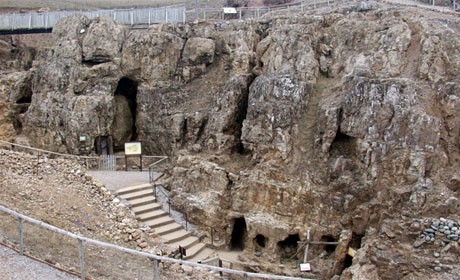
Petroleum and MVT Lead-Zinc deposits
Mississippi valley-type (MVT) deposits of lead and zinc are typically hosted in platform carbonate sequences in the foreland basins of mountain belts, with the mineralisation hosted in collapse breccias, faults and hydrothermal cavities (e.g. Haldar, 2020). MVT mineral deposits deserve a whole blog for themselves, so I’ll just mention the link between petroleum and MVT lead-zinc deposits that researchers have identified (e.g., Saintilan et al., 2019), whereby the metals are often transported to their site of deposition by sulphur-containing petroleum. The prospectivity of carbonate formations for lead-zinc deposits may be first identified during drilling by oil explorers. This concept of co-generation of petroleum and precursor brines allows lead-zinc explorers to use petroleum basin models to predict if a carbonate sequence could host lead-zinc mineralisation (Wikipedia, online a). Therefore, metals and petroleum system analysts should collaborate more!
Carbonates and Petroleum
Whilst we are on the topic of petroleum, 11 of the world’s 15 biggest oil and gas pools are in carbonate reservoirs: a significant percentage of the world’s daily petroleum production and remaining Reserves. Two supergiant examples are the Ghawar and Kirkuk oil fields. Ghawar Field has been the king of oil fields for 65 years. It has produced 55 billion barrels of oil, supplied > 5% of daily global demand for three decades (Sorbakhi, 2010), and still holds an estimated 71 billion barrels of Reserves (Society of Petroleum Engineers, 2015). Arab-D is the main reservoir rock (Figure 6): a Jurassic-aged carbonate rock that was deposited in a shallow marine setting, and contains c.15 % porosity and some super-permeability zones (Sorbakhi, 2010). Wow! And if the Arab-D’s oil yield isn’t phenomenal enough, the underlying, Permian-aged, Khuff carbonates were producing 6 billion standard cubic feet of gas every day (Afifi, 2004): more than half of Canada’s consumption (worldometer, online).
Figure 6. The vast area of Ghawar Field’s Arab-D carbonate oil reservoir.
Yes, the scale bar is correct!
From Al-Rawi (2015).
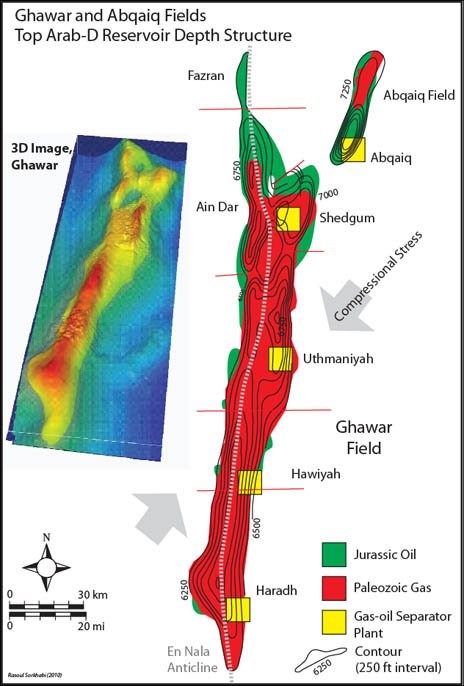
Kirkuk Field in Iraq initially had 38 billion barrels oil Reserves in place (Al-Rawi, 2015). Its natural gas seeps are fabled to be the biblical Eternal Fires. The Kirkuk Group carbonate reservoir has high porosity and a well-connected fracture system, including caverns full of oil, that enables individual wells to produce 100,000 barrels of oil per day (bopd) (Al-Rawi, 2015). The daily oil consumption of 132 countries is less than that (Wikipedia, online b) single well’s yield! I name-drop the Kirkuk Group carbonate rocks because I am privileged to have been on the discovery team of two Kirkuk Group oil fields, Sarqala and Kurdamir-Topkhana (Figure 7) (WesternZagros Resources, 2011). I witnessed first hand how Corporate Social Responsibility programs enabled by that petroleum generated significant quality-of-life increases for the region’s residents (WesternZagros Resources CSR programs, online). The productivity of the Sarqala fractured carbonate reservoir continues to increase and is now 24,000 bopd (Iraq-business news, online).
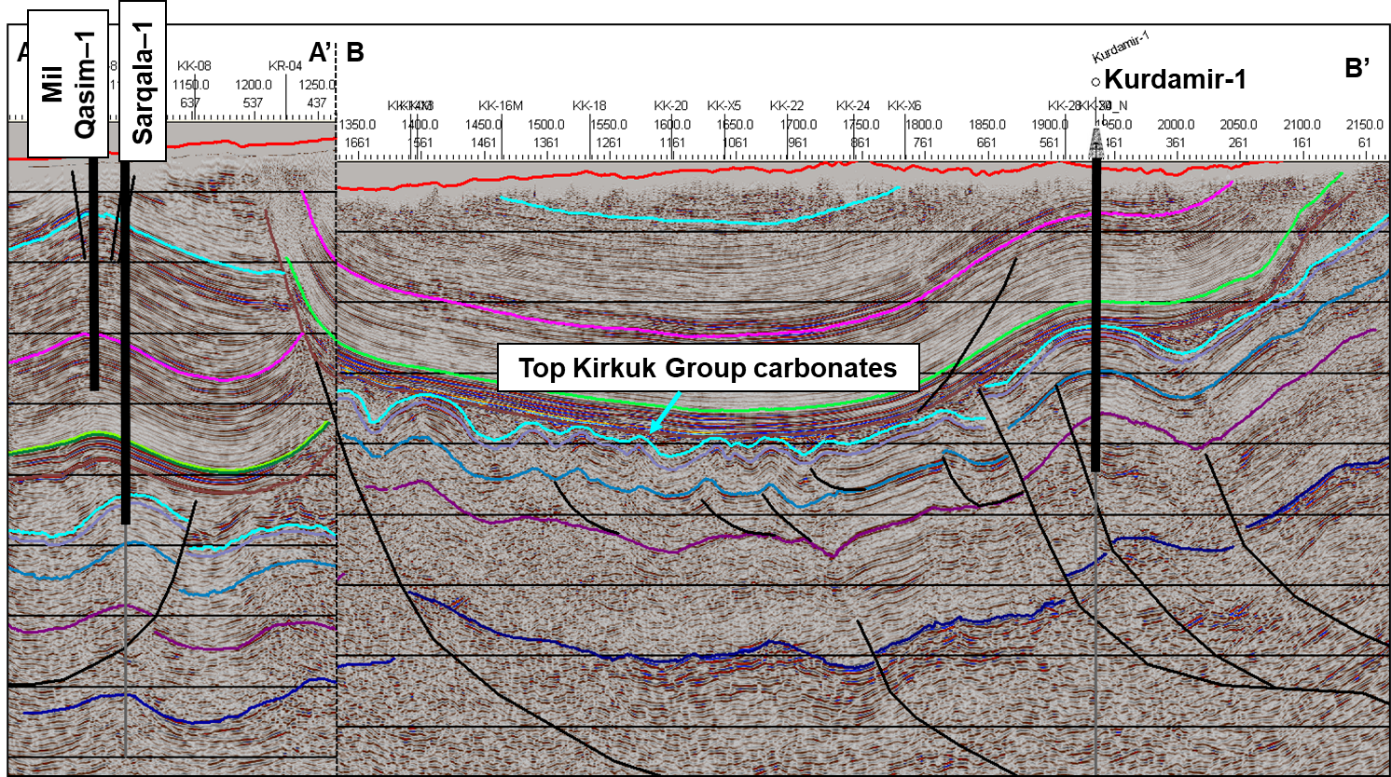
Figure 7. The folded and thrust-faulted Kirkuk Group carbonate reservoir of Kurdamir and Sarqala petroleum fields in Iraqi Kurdistan. Image ©2011 Graham Banks, modified from a published WesternZagros presentation (2008).
To support population growth, urbanisation, the reduction of poverty and an increasingly technological society, we will rely upon more discoveries of critical metals, base metals and petroleum. Metals and petroleum explorers should cross-pollinate their models and techniques. Let’s go and explore in carbonate rocks.
References
- Afifi, A.M., 2014. Ghawar: The Anatomy of the World’s Largest Oil Field. http://www.searchanddiscovery.com/pdfz/documents/2004/afifi01/images/affifi01.pdf.html
- Al-Rawi, M., 2015. Kirkuk. A Silent Giant Oilfield. GeoExpro, https://www.geoexpro.com/articles/2015/02/kirkuk-a-silent-giant-oilfield
- European Commission, 2020. Communication From The Commission To The European Parliament, The Council, The European Economic And Social Committee And The Committee Of The Regions. Critical Raw Materials Resilience: Charting a Path towards greater Security and Sustainability., https://eur-lex.europa.eu/legal-content/EN/TXT/?uri=CELEX:52020DC0474
- Fan, H.-R. et al., 2016. The giant Bayan Obo REE-Nb-Fe deposit, China: Controversy and ore genesis. Geoscience Frontiers 7, 335-344. https://doi.org/10.1016/j.gsf.2015.11.005.
- Fortier, S.M., et al., 2018. Draft critical mineral list—Summary of methodology and background information—U.S. Geological Survey technical input document in response to Secretarial Order No. 3359: U.S. Geological Survey Open-File Report 2018–1021, 15 p., https://pubs.usgs.gov/of/2018/1021/ofr20181021.pdf
- Green, C.J., et al., 2020, Grade and tonnage model for tungsten skarn deposits—2020 update: U.S. Geological Survey Scientific Investigations Report 2020–5085, 23 p., https://doi.org/ 10.3133/ sir20205085.
- Haldar, S.K., 2020. Introduction to Mineralogy and Petrology, 2nd edition. Elsevier, pp436.
- Historic UK, online, https://www.historic-uk.com/HistoryUK/HistoryofWales/The-Great-Orme-Mines/
- Iraq-business news, online, https://www.iraq-businessnews.com/2020/12/10/gazprom-neft-developing-fourth-well-at-sarqala/
- Ixer, R. 2001. An assessment of copper mineralization from the Great Orme Mine, Llandudno, North Wales, as ore in the Bronze Age. Proceedings-Yorkshire Geological Society 53, p213-219.
- Natural Resources Canada, 2021. Critical minerals., https://www.nrcan.gc.ca/our-natural-resources/minerals-mining/critical-minerals/23414
- Ritchie, H. and Roser,M. ,2018. Urbanization. Published online at OurWorldInData.org., https://ourworldindata.org/urbanization.
- Rio Tinto, 2011. Press release: Rio Tinto announces a 730,000 tonne increase of contained copper in mineral resources at Kennecott Utah Copper. https://www.sec.gov/Archives/edgar/data/863064/000119312511272752/d243934dex996.htm
- Roser, M.,2013. Future Population Growth. Published online at OurWorldInData.org., https://ourworldindata.org/future-population-growth.
Saintilan, N.J. et al. 2019. Petroleum as source and carrier of metals in epigenetic sediment-hosted mineralization. Scientific Reports 9, 8283. https://doi.org/10.1038/s41598-019-44770-7 - Society of Petroleum Engineers, 2015. Published online at PetroWiki., https://petrowiki.spe.org/Ghawar.
Sorbakhi, R.S., 2010. The King of Giant Fields, https://www.geoexpro.com/articles/2010/04/the-king-of-giant-fields. - The Geological Society, online, https://www.geolsoc.org.uk/GeositesGreatOrme
- USGS, 2021. Rare Earths, online, https://pubs.usgs.gov/periodicals/mcs2021/mcs2021-rare-earths.pdf
Wang, Z.-Y. et al., 2020. Carbonatite-Related REE Deposits: An Overview. Minerals 2020, 965; https://doi.org/10.3390/min10110965 - WesternZagros Resources, 2011, http://www.westernzagros.com/documents/2011SeptWZRCorporateFactSheet.pdf
- WesternZagros Resources, Corporate Social Responsibility, online, http://www.westernzagros.com/csr/programs.html
- Wikipedia, online a, https://en.wikipedia.org/wiki/Carbonate-hosted_lead-zinc_ore_deposits.
- Wikipedia, online b, https://en.wikipedia.org/wiki/List_of_countries_by_oil_consumption.
Worldometer, online, https://www.worldometers.info/gas/gas-consumption-by-country/
Receive Bell Geospace Articles To Your Inbox
Would you like to receive the next installment directly to your email?

